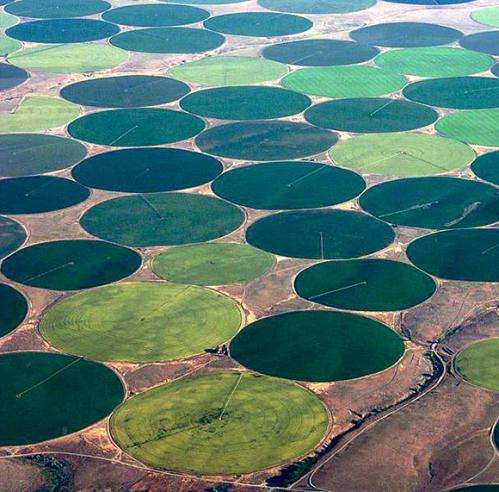Plugging water's effects in an Earth system model

(Phys.org) —Connecting several data pipes in a popular land model, a research team led by Pacific Northwest National Laboratory simulated how irrigation from both surface water and groundwater affects the Earth's water and energy budget. The surface water irrigation results varied depending on the observational sources used. Seasonal and year-to-year variations were large, and tended to be more pronounced in dry versus wet years. Even when the model was calibrated with agricultural observations, the difference between simulations showed a wide variability.
In a second study, the researchers introduced a method to represent irrigation from groundwater pumping for the first time. They found that groundwater-fed irrigation could lead to depletion of regional groundwater aquifers and unsustainable groundwater use in certain agricultural regions.
When the tap is turned, will there be water? As agricultural practices modernize and increase capacity around the world, agricultural irrigation is burdening water resources. World agriculture uses over 80 percent of fresh water sources, competing with other uses such as household, industrial and energy production. Irrigation and agricultural practices also have a substantial impact on the regional and local climate and the land's surface water system through evaporation and plant transpiration. In these studies, the researchers incorporated impacts of irrigation from both surface sourced and groundwater pumping in a land surface model to better understand how it affects the Earth and changes to the atmosphere. This work is an important step to understanding historical and future climate change.
The team included a groundwater pumping design coupled to its irrigation module in the Community Land Model (CLM4) and configured it to simulate land surface water and energy budgets at a detailed resolution. They used two sets of data sources for irrigation area maps: 1) The Global Map of Irrigated Area (GMIA), a map that represents the fractional irrigated area around the year 2000, which combines reports from the Food and Agriculture Organization of the United National and the U.N. Ministries of Agriculture, and land-use and land-cover data from the U.S. Geological Survey; and 2) a high-resolution irrigated area map for the continental United States that combines the Nadir Bidirectional Distribution Function Adjusted Reflectance (NBAR) data during 2001, gridded climate-based indices of the surface moisture status, and a map of cultivated areas. With this data, they performed numerical experiments, with and without irrigation or groundwater pumping, to understand the impact of irrigation on terrestrial water cycling and the sensitivity of the model results to various input datasets, parameter values and irrigation water source options.
They found that at seasonal to inter-annual time scales, the effects of irrigation on the surface energy budget were large and persistent-more pronounced in dry years than wet years. Even with model calibration that produced overall good agreement with the irrigation amounts from the National Agricultural Statistics Service, differences between the two irrigation area datasets still dominated the differences in the inter-annual variability of land surface responses to irrigation. Their results also show that changes in soil moisture content induced by groundwater-fed irrigation have significantly altered the water availability and distribution, with large effects on land surface fluxes through surface-subsurface interactions.
Groundwater pumping can lead to fast depletion and unsustainable groundwater use in agricultural regions that have a low recharge rate (downward movement of surface water to the aquifer) and a deep groundwater table. Therefore, large-scale pumping should be included in Earth system models to depict the effects of irrigation on the regional water cycle.
Both studies highlight the challenges of depicting realistic irrigation effects on climate and the need to include a more complete representation of irrigation, surface and subsurface hydrology, and water management in Earth system models.
The researchers will apply their findings to coupled land-atmosphere models that have incorporated observational data along with models that integrate river routing and water management.
More information: Leng G, M Huang, Q Tang, H Gao, and LR Leung. 2013. "Modeling the Effects of Groundwater-fed Irrigation on Terrestrial Hydrology over the Conterminous United States." Journal of Hydrometeorology, early online. DOI: 10.1175/JHM-D-13-049.1
Provided by Pacific Northwest National Laboratory

















